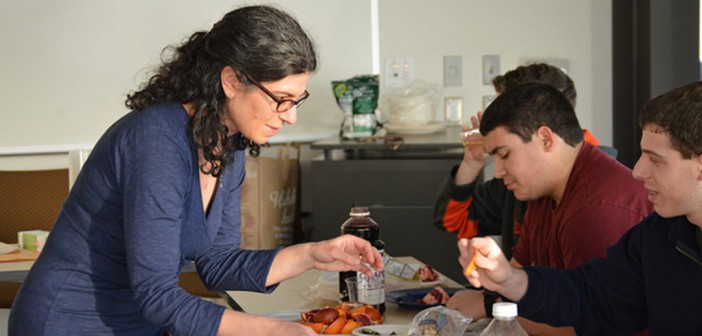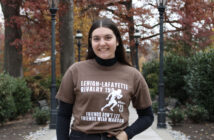Tu B’Shevat, the 15th day of the month of Shevat on the Jewish calendar, is celebrated during a full moon in February to mark the beginning of a “new year” for trees. Lehigh hosted its first Tu B’Shevat Seder on Wednesday, Feb. 4, co-sponsored by Jewish Student Life, Alpha Epsilon Pi and the Office of Sustainability.
The holiday first started as a way to mark the age of trees so fruit could be given as an offering to God. Fruit from trees was not gathered until three years after the tree bloomed, so it had time to grow. During the Tu B’Shevat Seder, a tradition developed by the Kabbalists, one eats tree fruits and drinks four glasses of wine or grape juice to connect spiritually to God.
“In the last 15 years in North America, it’s really become an environmentalist holiday,” Rabbi Danielle Stillman said. Tu B’Shevat Seders have become increasingly more celebrated to emphasize the connection to the Earth and the importance of trees and the environment, Stillman said. “It has really taken on a new life with the environmental movement.”
A Tu B’Shevat Seder has six different levels of tastings, each with different kind of fruits and drink. All of the different fruits enjoyed during the Seder represent “diversity of people and the diversity of the planet around us,” according to Alpha Epsilon Pi Jewish Leadership Chair Allon Vitenson, ’17.
The first and second levels consist of eating fruits with a shell, such as pomegranates and pistachios, and drinking white wine or juice to symbolize the winter season. During these levels, participants reflected on barriers in their life that prevent them from being sustainable.
At the third and fourth levels, fruits with a pit are eaten and a drop of red is added to the white drink. A blessing is said before each level.
“Every time you think a lot about what you are eating you are helping repair the world,” Stillman said.
The food at the sixth level is completely edible and at the final level a more spiritual or mystical food, like chocolate, is eaten. At these levels, celebrators were asked to share something they could contribute to make the world more sustainable and to describe a situation when they felt connected to nature. Throughout the Seder the color of the drink changes to symbolize the change of seasons from winter to spring.
“It’s a hopeful holiday, things are blooming even when you can’t see it,” Stillman said.
Other customs followed by those celebrating the Tu B’Shevat holiday include planting or eating foods that grow in Israel, like pomegranates, olives, dates and figs.
Another important aspect of Tu B’Shevat is the pursuit of the Jewish principle of Tikkun Olam.
“It literally means fixing the world,” Vitenson said. “It’s a constant drive for Jews and everyone to constantly try to improve the world around us.”
“The symbolism of the (Tu B’Shevat) Seder is really that when you eat each fruit and concentrate on it, you’re actually repairing the world in a mystical sense,“ Stillman said.






Comment policy
Comments posted to The Brown and White website are reviewed by a moderator before being approved. Incendiary speech or harassing language, including comments targeted at individuals, may be deemed unacceptable and not published. Spam and other soliciting will also be declined.
The Brown and White also reserves the right to not publish entirely anonymous comments.